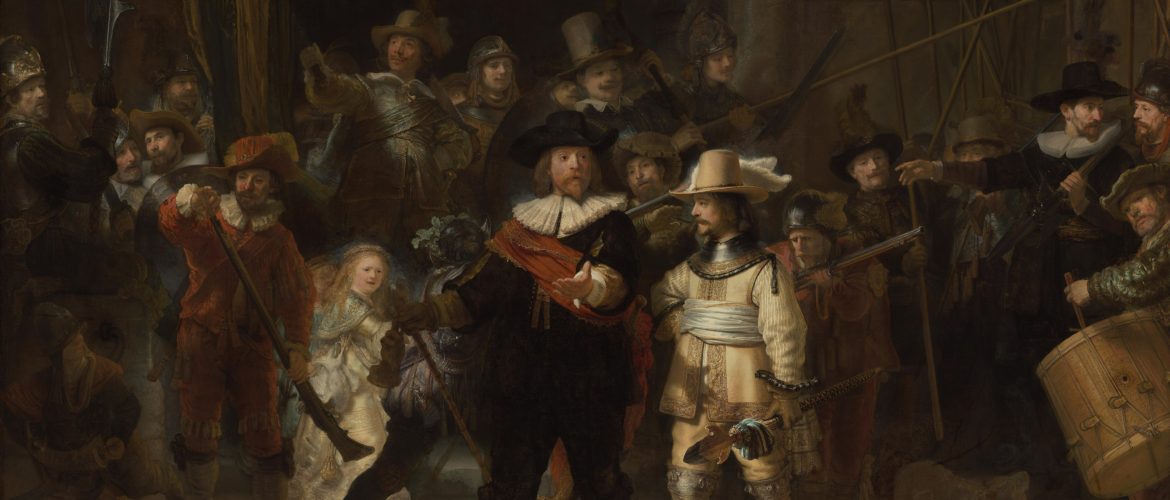What Makes Rembrandt’s “The Night Watch” an Exemplary Work of Art?

Rembrandt Harmenszoon van Rijn’s masterpiece “The Night Watch” is considered one of the best classic artworks ever created. At a glance, it is not obvious why this painting arouses admiration since there is nothing extraordinary going on in the picture. Many people indeed find it hard to explain its dazzling popularity. As it turns out, the devil is in the details, and there are several features and peculiarities that make it—without exaggeration—an exemplary work of art.
Things Making “The Night Watch” an Exemplary Work of Art
What you know as “The Night Watch” was originally called “The Shooting Company of Frans Banning Cocq and Willem van Ruytenburch.” Due to the length of the name, people slightly shortened it for the sake of convenience. Rembrandt completed his pearl of the Dutch Baroque era in 1642. The first thing that made it ultra-popular is the colossal size of the piece. It’s 363 cm × 437 cm, which is immensely big.
The size of the painting contributes to another factor that made the Dutch master’s painting iconic — a sense of movement. Rembrandt managed to break through the tradition of depicting a static military group portrait or Dutch still life. Instead, he focused on the motion of every depicted individual. If you pay close attention to the artwork, you would see that there is not a single idle person in it. That’s what made it somewhat revolutionary.
What an ordinary man and woman wouldn’t notice is the use of light and shadow. “The Night Watch” is an illustrious example of chiaroscuro, a contrast between light and dark. The funny fact about the painting is that the setting was set in the daytime. Using shades, Rembrandt created a sense of three dimensions. Experts also call it tenebrism.
Because of all those things, Rembrandt Harmenszoon van Rijn’s artwork earned its place in the history of art. Nowadays, it is in the collection of the Amsterdam Museum.
